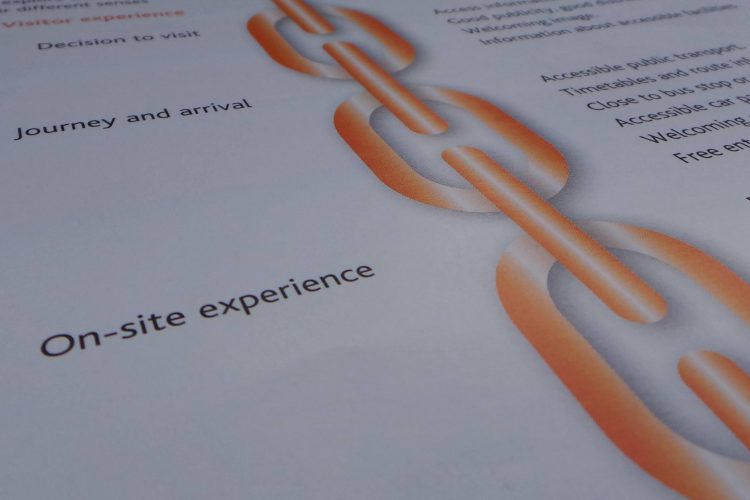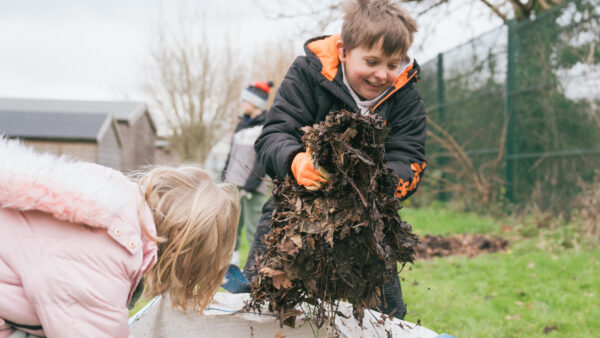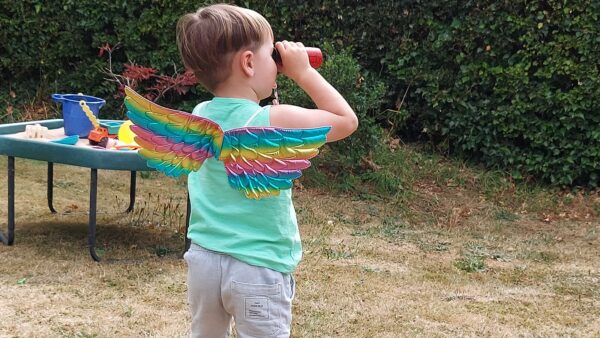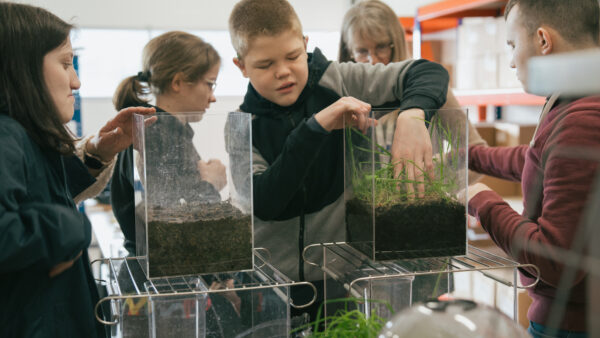The Access Chain was developed by the Sensory Trust to ensure that access plans and reviews relate to all parts of the visitor experience. The Access Chain recognises that the first step is when people make a decision to visit, followed by their journey to a site, then the experience itself, and ending with a safe return home. If any link in the chain is broken then what should be a great day out, can turn to disappointment, or may never happen.
For example, a new accessible visitor centre may fail to increase the diversity of visitors if there is no accessible car parking nearby, or if the associated promotion fails to convey that disabled visitors are welcome and have been thought about.
The Access Chain is a good basis for reviewing or planning access. It has proved so effective we now use it as the basis for our Access Reviews.
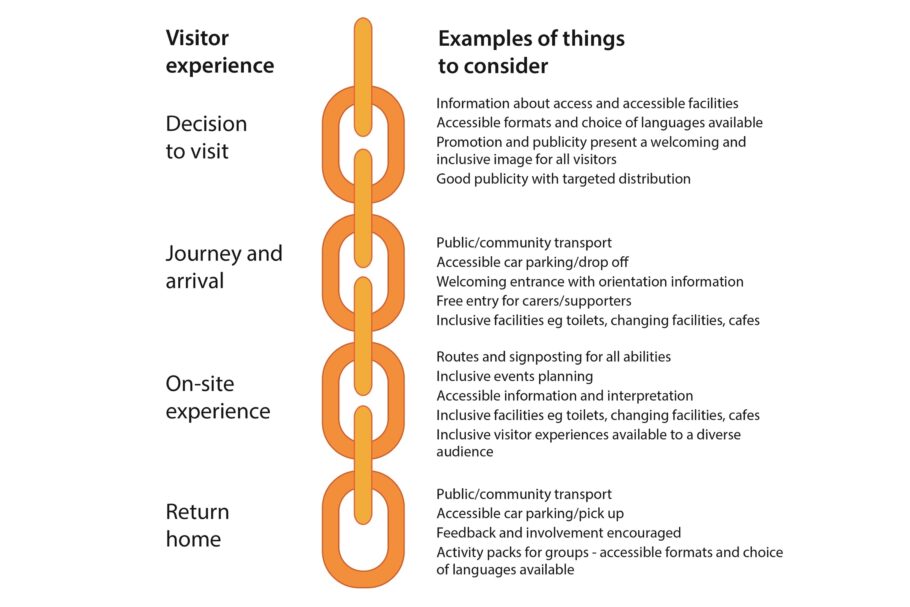
Step 1: Decision to visit
Most decisions to visit a site are made at home and many people rely on information to know if a site is welcoming, safe, accessible and worth visiting.
Off-site information should include details about accessibility in relation to:
- Parking and transport information
- Location and access information for toilets, refreshments and other facilities
- Details of staffing and staff skills (for example Sign Language)
- Images displaying a diversity of visitors to show that everyone is welcome
- The range of activities and experiences available
- Opening times and prices
- Information on guided tours and other organised activities and events
Pre-visit information should be available on request in alternative formats such as large print, braille, Plain Language and audio. Design your standard information using information access guidelines to minimise requests for other formats.
Step 2: Journey and arrival
The ease of getting to a site is a major factor in determining whether people will visit or not. This sounds obvious, but this aspect is often neglected in access planning. It is easy to dismiss many of these issues as outside the scope of access improvements to a site. However, the visitor experience relies on this link of the access chain being as strong as the rest.
The more choices people have in ways to reach your site, the more accessible it will be. Talk to your local public transport providers to look at ways of improving their services that connect to your site. Involve disability and access groups in these discussions. Things that may be improved include:
- Choosing accessible vehicles such as minibuses and buggies
- Changing routes or timetables to make access more convenient, for instance running busses when most people want to visit the park, and ensuring there are busses when most people want to return home
- Making timetables and route information available to potential visitors in accessible formats
- Creating new bus stops at site entrances
Many disabled people rely on their cars to get about. Improvements in provision for disabled car users include:
- Accessible car parking close to the entrance
- Drop off and pick up points close to the entrance
- On large sites, consider allowing car access to parts of the site
Other improvements that can enhance the arrival experience for visitors include:
- Access volunteers available to provide support
- Staff and volunteers trained in disability awareness
- Staff and volunteers with extra skills such as Sign Language
- Free entry for essential support workers, carers and companions
- Wheelchairs available, portable seats etc. for loan
Step 3: On-site experience
The on-site experience is the link in the access chain that most site managers will feel most familiar with. Improvements made here should flow naturally to and from improvements made in the other links of the chain. For instance, a new touch trail for visually impaired people would naturally lead to improvements in transport such as audio timetables available by telephone and to improvements in the type, format and distribution of pre-visit information.
Access improvements fall into these categories:
- Routes and signposting improvements
- Facilities such as toilets, cafes and children's play are made accessible
- Information and interpretation is designed to include people with disabilities
- Highlights are accessible and experiences of equal quality are created
- Staff and volunteers have disability awareness training
- Events and activities are designed to include disabled people
Step 4: Return home
It is easy to overlook this final step in the chain, but problems at this stage can overturn an otherwise happy visit. This might be a long, tiring walk back to the car, poorly signed routes or simply a lack of seating to help people pace themselves. Improvements usually result from paying good attention to the first link of the chain (journey and arrival), but there are other things that can improve the visitor experience:
- Making it easy for people to give feedback on their experiences. Visitor satisfaction is probably the truest measure of whether access improvements have worked, and can provide impetus and ideas for further improvement.
- Some sites may benefit from providing information resources designed to support after-visit sessions for groups, group leaders and teachers.
- Providing information that encourages people to become involved as volunteers or as members of friends groups.
Consult with people along the way
We strongly recommend that you consult with your intended audiences to make sure your access plans best meet their needs. Getting people involved in planning helps ensure that access improvements best meet priorities.
